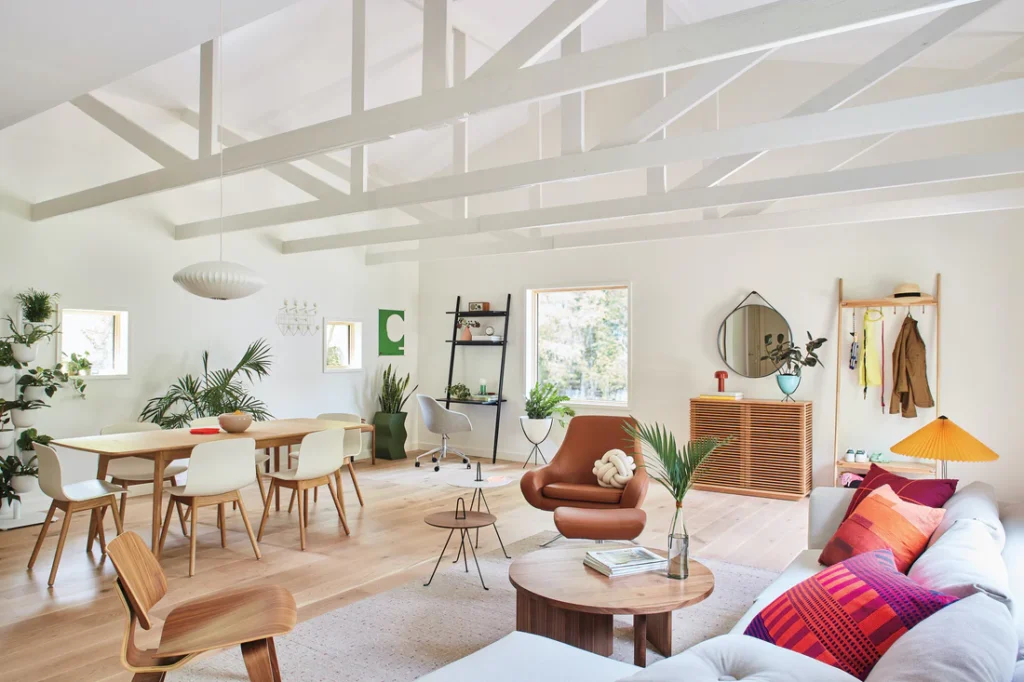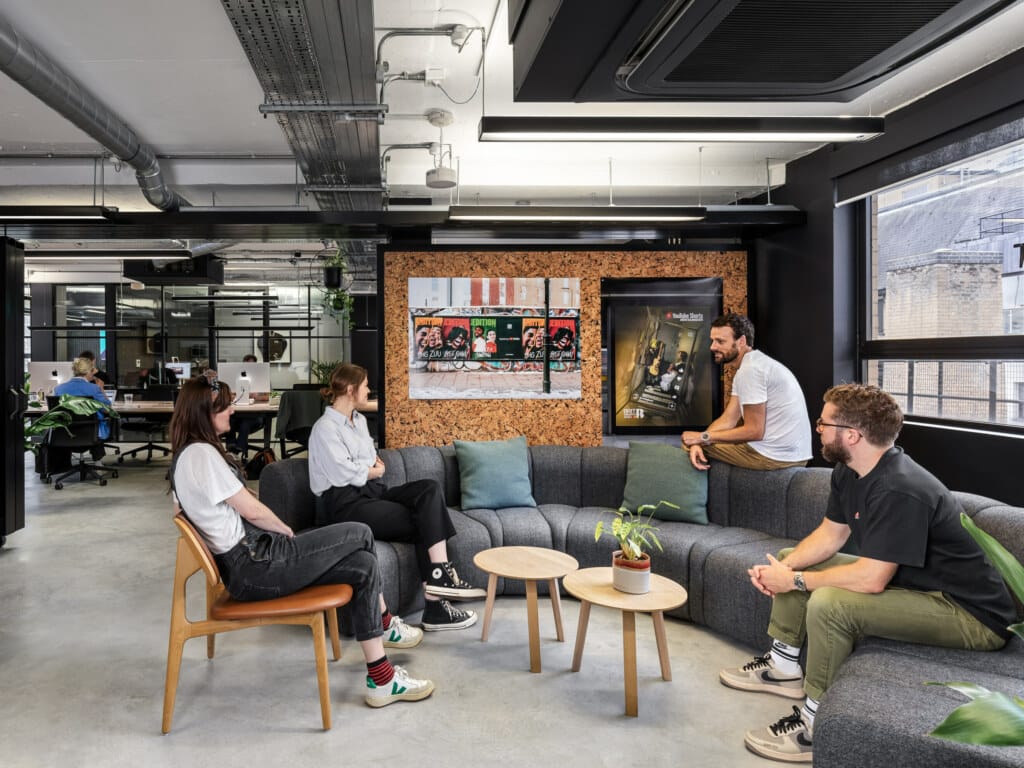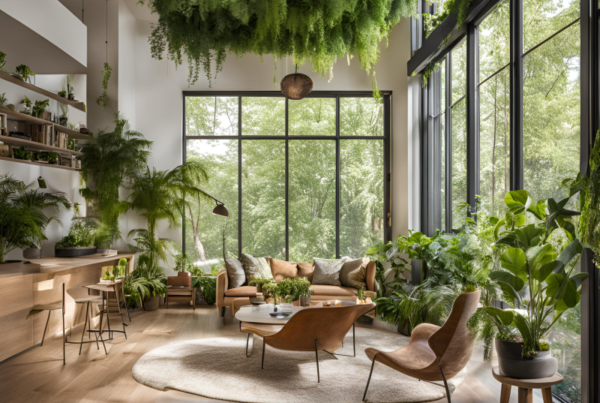Creating an environment conducive to creativity is essential for individuals and organizations seeking to innovate and express themselves effectively. This article explores key strategies and design principles that foster imaginative thinking, from transforming physical spaces to integrating technology and building collaborative communities. By implementing these insights, you can overcome creative blocks, enhance collaboration, and cultivate a vibrant atmosphere where ideas can flourish. Whether you are a leader seeking to inspire your team or an individual looking to unlock your creative potential, this guide offers practical solutions to help you harness creativity in your everyday life.
Table of Contents
Cultivating a Creative Mindset for Innovation
In a rapidly changing world where innovation drives success, cultivating a creative mindset is more crucial than ever. A creative mindset allows individuals and organizations to solve problems differently, approach challenges with an open mind, and develop groundbreaking ideas that can lead to significant advancements. In this section, we will explore various strategies for nurturing creativity and innovation in both personal and professional spheres.
Understanding the Creative Mindset
At its core, a creative mindset is rooted in the ability to think divergently and embrace uncertainty. It encourages individuals to break free from conventional thought patterns and explore myriad possibilities. Those with a creative mindset often exhibit the following traits:
- Curiosity: A never-ending desire to explore and understand the world around them.
- Resilience: The ability to bounce back from failures and view them as learning opportunities.
- Open-mindedness: Willingness to consider different perspectives and ideas.
- Imaginative thinking: The capability to visualize new concepts that transcend current limitations.
Fostering these qualities is essential for transforming thoughts into innovative solutions and products.
Practical Strategies to Enhance Creativity
Here are several strategies to help cultivate a creative mindset:
1. Embrace Diverse Experiences
Exposure to varied experiences can vastly expand your creative horizons. Engaging in different activities, such as traveling, attending cultural events, or trying a new hobby, introduces fresh perspectives and stimulates creative thoughts.
2. Create a Structured Creative Routine
While spontaneity can spark creativity, establishing a structured routine can also enhance it. Dedicate specific times for brainstorming, journaling, or engaging in creative practices. Consistency nurtures habit, which is a catalyst for innovation.
3. Foster an Environment of Collaboration
Collaborative environments breed creativity. Surround yourself with individuals from diverse backgrounds and expertise. For instance, setting up brainstorming sessions or collaborative workshops can invite unique insights that may not arise in isolation. Simon Sinek’s TED Talk on leadership reveals how collaboration can inspire innovation within organizations.
4. Encourage Playfulness
Creativity thrives in playful environments. Engaging in playful activities, such as improvisational games or arts and crafts, ignites the imagination and allows for unfiltered expression. This playful approach can serve as a critical release from the pressures to perform, leading to unexpected insights.
Mindfulness and Reflection
Practicing mindfulness can significantly enhance your creative capabilities. Taking time to reflect, meditate, or engage in mindfulness exercises can open the mind to new ideas and alleviate the stress that often blocks creativity. Regularly scheduled moments of reflection help solidify thoughts and inspire innovative concepts.
Overcoming Creative Blocks
Creative blocks are natural and can hinder innovation. Recognizing this, it’s vital to identify strategies to overcome them:
- Change your environment: A shift in surroundings can stimulate fresh thoughts and ideas.
- Limit distractions: Creating an environment conducive to concentration can be instrumental in fostering creativity.
- Engage in brainstorming techniques: Methods such as mind mapping or free writing can help unlock creative potentials.
In Conclusion
By fostering a creative mindset, engaging in diverse experiences, and embracing collaboration, individuals and organizations can harness their full innovative potential. The path to creativity is as important as the destination; by prioritizing these elements, you stand to cultivate a fertile ground for innovation.
Designing Inspiring Spaces for Dreamers
Creating spaces that inspire and foster creativity is fundamental for dreamers seeking to bring their visions to life. The environment we inhabit greatly influences our thoughts, feelings, and efficiency. Therefore, designing such spaces becomes a pivotal aspect of nurturing a creative mindset. This article delves into the essential elements for crafting inspiring spaces where dreamers can flourish.
The Psychology of Space
Understanding the connection between the physical environment and mental function is crucial. Research has shown that design can significantly impact productivity, creativity, and overall well-being. Here are some psychological principles that support the idea of intentional space design:
- Light and Emotion: Natural light enhances mood and energy levels. Spaces flooded with light can boost creativity and reduce feelings of stress.
- Color Psychology: Different colors evoke different emotions. For instance, blue is calming, while yellow promotes optimism and energy. Designing with a thoughtful color palette can influence the way dreamers feel in their spaces.
- Spatial Organization: Decluttering and organizing physical environments can lead to enhanced mental clarity. A well-structured space allows for greater focus, fostering a conducive atmosphere for creativity.
Integrating Nature
The concept of biophilic design revolves around incorporating nature into our living and working environments. This is particularly effective for dreamers, as it cultivates a sense of peace and rejuvenation. Here are some ideas to seamlessly integrate natural elements:
- Indoor Plants: Adding greenery not only beautifies a space but also improves air quality and boosts creativity. Research suggests that being close to plants can enhance mood and cognitive functioning.
- Natural Materials: Utilize materials like wood, stone, and wool to create a warm, inviting atmosphere. These materials help foster a connection to the Earth, which can be particularly grounding for creative pursuits.
- Natural Light: Maximize the use of windows and skylights to invite natural light inside. This not only creates a vibrant space but also reduces dependency on artificial lighting.
Flexible and Adaptable Designs
Dreams and ideas are not static; therefore, spaces designed for dreamers should reflect flexibility and adaptability. This can be achieved through:
- Movable Furniture: Furniture that can be easily rearranged allows individuals to customize their environment based on their current project or mood, promoting an ever-inspiring space.
- Multi-functional Areas: Designate spaces that can serve various purposes—workshops, creative studios, or relaxation zones. This versatility can stimulate different forms of creativity.
- Modular Systems: Incorporate modular furniture that can be expanded or reconfigured according to needs. This approach can facilitate collaboration and brainstorming sessions, enhancing the creative flow.
Personalization and Self-Expression
Encouraging personalization in dreamers’ spaces is essential. When individuals can add their unique touch, they feel more connected to their environment. Here are ways to embrace this aspect:
- Decorative Elements: Allow for the inclusion of art, photographs, and memorabilia that inspire and reflect the individual’s journey.
- Creative Corners: Designate zones specifically for hobbies and passions, such as art supplies, musical instruments, or writing desks. These areas serve as invitations for creativity to manifest.
- Inspirational Quotes: Use wall art or sticky notes to showcase motivational quotes and affirmations that resonate with the individual’s aspirations. This serves as a visual reminder of their purpose and goals.
Creating Community-Centric Spaces
Spaces that foster community interactions truly elevate the potential for creativity. Engaging with others can inspire new ideas and perspectives. Consider the following:
- Collaborative Zones: Design areas that invite teamwork and collaboration, allowing for brainstorming sessions or casual meetups. These zones can foster innovation and connection among dreamers.
- Host Workshops: Consider organizing workshops and creative sessions within inspiring spaces. This encourages community participation and shared learning experiences.
- Public Engagement: Create spaces that encourage community involvement, such as art installations or collaborative projects that make use of local talent and skill.
In conclusion, designing spaces for dreamers requires intentionality, an understanding of psychological factors, and engagement with both natural and flexible elements. By fostering personalization and community, these spaces can serve as beacons of inspiration, allowing creativity to flourish unbounded.
For more insights into the psychology of design and how it can foster creativity, visit Smashing Magazine.
Harnessing Technology to Elevate Creativity
In the contemporary landscape, technology serves as a powerful catalyst for innovation and creativity. The blend of traditional creative practices with advanced technology has revolutionized how individuals and organizations approach creative processes. By understanding and leveraging technological advancements, we can unlock new dimensions of creativity that were previously unimaginable.
The Role of Digital Tools in Creative Processes
Digital tools have fundamentally changed how we create and collaborate. Software applications designed for creative tasks—such as graphic design, video editing, and music production—offer capabilities that streamline workflows and enhance creative output. Here’s how:
- Collaboration Software: Platforms like Slack and Trello facilitate seamless collaboration among team members, allowing for real-time brainstorming and project management.
- Creativity Software: Tools such as Canva for graphic design or Adobe Creative Cloud for professional-grade media creation help users articulate their ideas visually and aurally.
- AI and Machine Learning: Technologies like OpenAI’s *DALL-E* or *ChatGPT* can provide inspiration and creative suggestions, allowing creators to break through mental blocks and generate novel ideas.
This synergy between technology and creativity encourages experimentation, enabling creators to push the boundaries of their work.
Emerging Technologies Shaping Creativity
The fast-paced development of technologies, such as augmented reality (AR) and virtual reality (VR), is significantly transforming creative avenues. These technologies allow creators not just to visualize their concepts but also to immerse others within their creative worlds. The following are notable areas where these technologies are making an impact:
- Augmented Reality: AR applications can overlay digital elements on the physical world, enhancing installations or performances with layers of interactivity and engagement. Artists are using platforms like Spark AR to create augmented experiences that captivate audiences.
- Virtual Reality: VR has emerged as a revolutionary medium for storytelling and art creation. Artists are crafting entire experiences in VR, allowing audiences to interact and influence narratives. Tools like Oculus provide a gateway to explore these immersive environments.
- Generative Art: Algorithms and code are becoming tools of expression for artists, leading to the rise of generative art, where works are created through the interaction of data and programming. Platforms like OpenProcessing invite creators to share and explore generative projects.
The Influence of Social Media on Creative Expression
Social media platforms are vital in promoting creative work and fostering community engagement. They enable artists, musicians, and designers to reach wider audiences and receive instant feedback. Strategies to make the most of social media in your creative journey include:
- Building a Presence: Platforms like Instagram and Pinterest are ideal for visual artists to showcase their portfolios. Regularly sharing your work can attract followers and potential clients.
- Engaging with the Community: Participating in discussions, hashtags, and trends can enhance visibility and provide inspiration from others in the creative sphere.
- Leveraging User-Generated Content: Collaborating with your audience or other creators can lead to unique projects and widen your creative reach.
By fostering community and engagement through social media, creators can cultivate a supportive environment that inspires continual innovation.
Final Thoughts on the Intersection of Technology and Creativity
The integration of technology into creative processes opens up infinite possibilities. By embracing these tools, creators can enhance their artistry and reach audiences in unprecedented ways. As we look forward, it’s clear that those who adapt to and leverage technological advancements will continue to lead the way in creative innovation.
Building Communities that Foster Imagination
Communities play a pivotal role in nurturing imagination and creativity, acting as fertile ground where ideas can sprout and flourish. When individuals come together, sharing their diverse perspectives and experiences, the collective energy can ignite a creative spark that one might not achieve in isolation. Fostering such a community requires intentionality in design, culture, and practice. Below, we explore key elements of building vibrant communities that emphasize imagination.
The Importance of Collaborative Spaces
Creating environments that encourage collaboration is fundamental to fostering imagination. Spaces that invite people to gather — whether physical or virtual — allow for spontaneous interactions and serendipitous brainstorming, leading to innovative solutions and artistic expression. Consider these components when designing collaborative spaces:
- Flexibility: Spaces should accommodate various activities. Modular furniture and movable partitions can transform an area for small group discussions or larger workshops.
- Accessibility: Ensure that spaces are accessible to everyone, including individuals with disabilities. This inclusivity enhances participation and creativity.
- Natural Elements: Integrating nature, such as plants and natural light, can boost mood and inspire creative thinking.
Encouraging Diverse Participation
Communities flourish when they welcome members from varied backgrounds, cultures, and skillsets. Diversity brings a wealth of perspectives that enrich discussions and lead to innovative ideas. To encourage diverse participation, consider the following:
- Outreach Programs: Actively seek out individuals or groups that may feel excluded from the community. Use social media, local events, and partnerships to broaden your reach.
- Workshops and Events: Organize events that cater to different interests and skills, encouraging participation from various demographics. This can range from art showcases to tech hackathons.
- Mentorship Opportunities: Pairing experienced community members with newcomers promotes knowledge-sharing and helps cultivate fresh ideas.
Fostering a Culture of Openness
A community that encourages sharing, exploration, and open-mindedness fosters imagination. Promote an atmosphere where individuals feel safe to express their ideas without fear of judgment. Strategies to develop such a culture include:
- Feedback Mechanisms: Create structured platforms for feedback, such as community forums or suggestion boxes. This empowers community members to voice their thoughts and contribute to collective growth.
- Celebrating Failure: Encourage an attitude that views failure as a step toward success. Share stories of setbacks that led to breakthroughs, reinforcing that each idea is a part of the creative journey.
- Recognition of Contributions: Regularly highlight individual or group achievements within the community. Recognition fosters motivation and encourages continued participation.
Utilizing Technology as a Bridge
In today’s digital age, technology plays a crucial role in connecting community members and enhancing creativity. Online platforms can facilitate collaboration, breaking geographic barriers and making resources widely accessible. Here are some ways to leverage technology:
- Online Collaboration Tools: Use platforms such as Slack, Trello, or Miro to enhance collaboration on projects and sustain engagement.
- Virtual Events: Hosting webinars or online workshops allows for wider participation, increasing the community’s creativity by including voices from different regions.
- Creative Platforms: Use social media to share artistic or innovative outputs, fostering inspiration and encouraging others to contribute their creative endeavors.
Building Sustainable Networks
A thriving community for imagination is also sustainable. Establishing networks that support longevity involves creating spaces where creativity can continuously thrive. Consider these practices:
- Regular Engagement: Set up a calendar for regular meetings, workshops, or informal gatherings to maintain momentum. This consistent interaction nurtures relationships and innovation.
- Resource Sharing: Develop a system where members can share resources, such as tools, manuals, or skills, enhancing the overall creativity and productivity of the community.
- Partnerships with Local Businesses: Collaborate with local businesses or educational institutions to provide resources or venues for community activities, creating a support network.
In conclusion, building communities that foster imagination requires a holistic approach integrating physical spaces, diverse participation, a culture of openness, thoughtful use of technology, and sustainable practices. Each of these elements contributes uniquely to creating an environment where creativity can thrive, leading to innovative ideas and solutions that benefit everyone involved.
For further insights about building strong community networks, you might explore Rainbow Shaker Podcast, which discusses the importance of community in fostering creativity and joy.

Collaboration and creativity are vital for innovation within organizations. To inspire creativity, create playful environments that allow for unfiltered expression and incorporate mindfulness practices, encouraging regular reflection to enhance creative thinking. Overcome creative blocks by changing surroundings, limiting distractions, and employing brainstorming techniques. Designing inspiring spaces involves integrating natural elements, personalizing environments, and ensuring flexibility to accommodate various projects and styles, fostering a deep connection to one’s work.
Building communities that nurture imagination requires collaboration, diversity, and a culture of openness. Create accessible, inviting spaces that facilitate diverse participation through workshops and mentorship opportunities. Utilize technology for online collaboration and engagement, and ensure regular interactions to support community sustainability. Recognizing contributions and celebrating a culture that values experimentation will enhance collective creativity, leading to innovative solutions and ideas.









